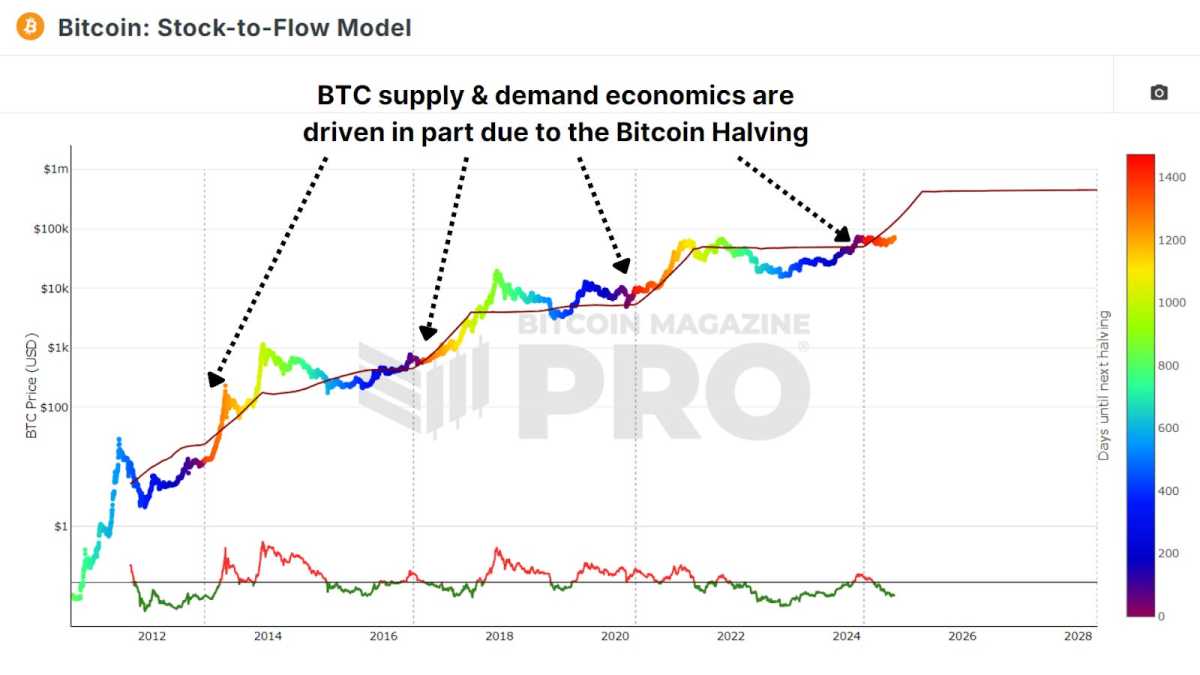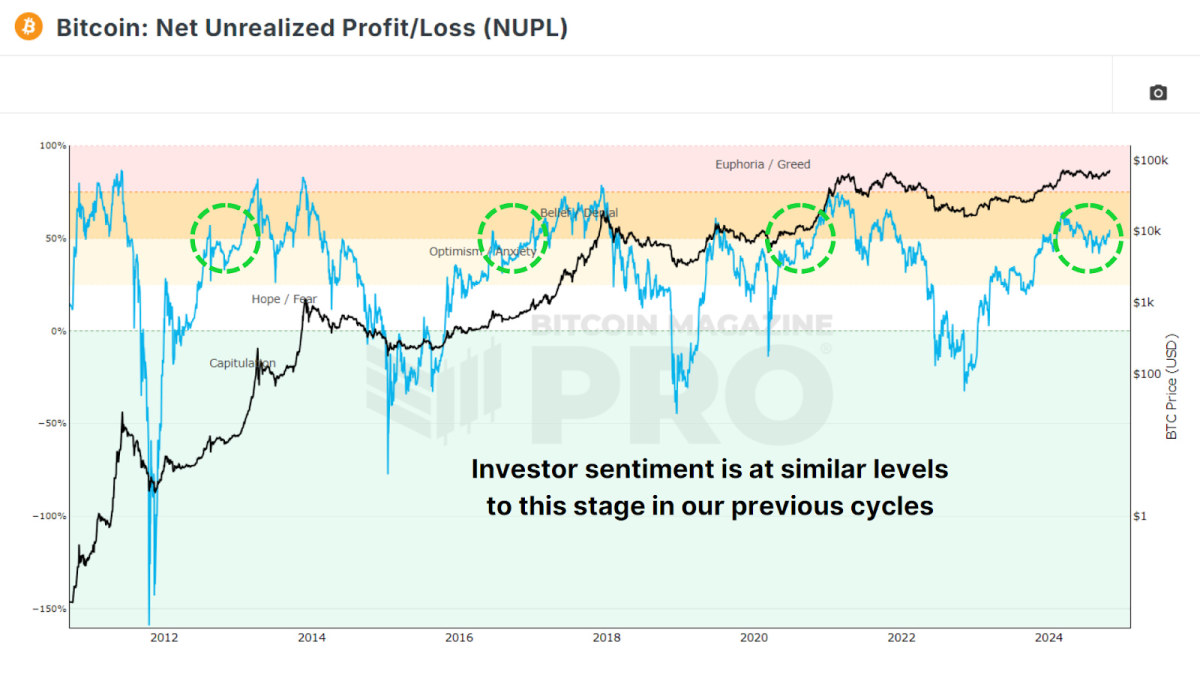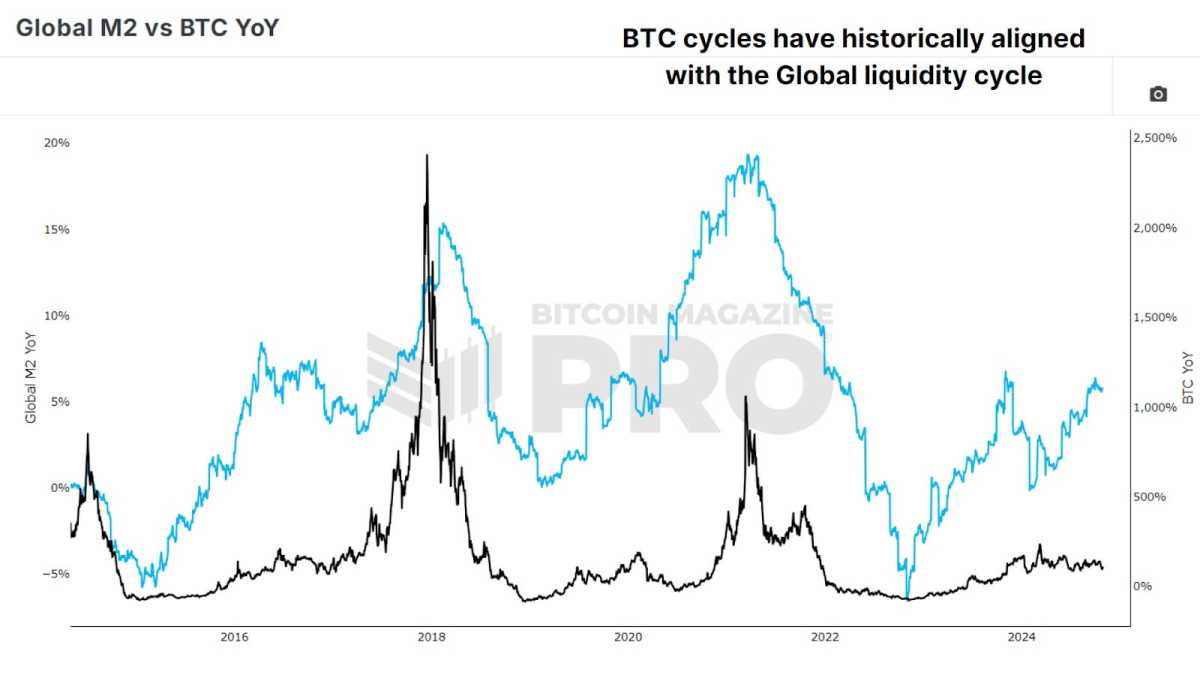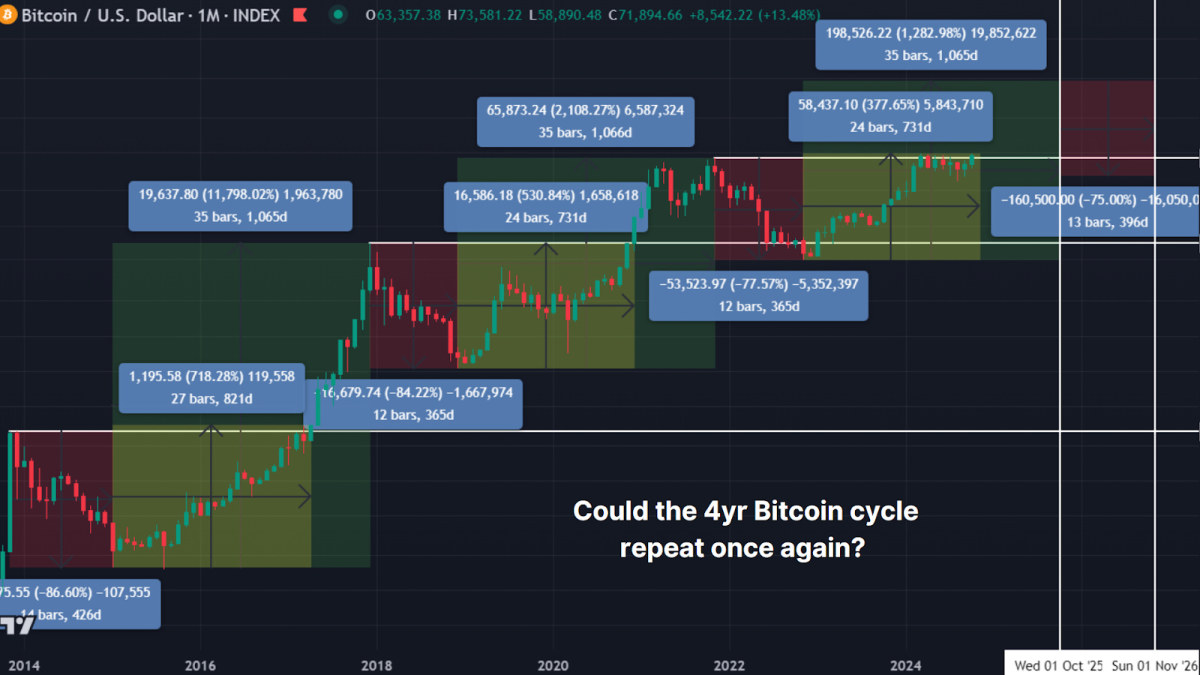Bitcoin has historically followed a familiar four-year cycle. Now, two years into the current cycle, investors are closely watching patterns and market indicators to gain insight into what the next two years may bring. This article delves into the anatomy of Bitcoin’s four-year cycle, past market behavior, and future possibilities.
The 4-year cycle
Bitcoin’s four-year cycle is partially affected by its scheduled halving events, which reduce the block rewards miners receive by 50% every four years. This halving reduces the supply of new Bitcoin coming to the market, often creating supply-demand pressures that can drive up prices.
This can be clearly visualized by the Stock-to-Flow modelwhich compares existing BTC in circulation to the inflation rate, and models a ‘fair value’ based on comparable hard assets such as gold and silver.

We are currently halfway through this cycle, meaning we may be entering a period of exponential gains as the typical one-year post-halving catch-up phase progresses.
A look back at 2022
Two years ago, Bitcoin faced a serious crash amid a series of business implosions. November 2022 marked the demise of FTX, as rumors of insolvency led to massive sell-offs. The domino effect was brutal, as other crypto institutions such as BlockFi, 3AC, Celsius and Voyager Digital also fell.

Bitcoin’s price fell from around $20,000 to $15,000, reflecting broader market panic and leaving investors concerned about Bitcoin’s survival. True to form, however, Bitcoin rebounded once again, rising back fivefold from its 2022 low. Investors who weathered the storm were rewarded, and this recovery supports the argument that Bitcoin’s cyclical nature remains intact.
Similar sentiment
In addition to price patterns, investor sentiment also follows a predictable rhythm during each cycle. Analyzing the Net Unrealized Gain and Loss (NUPL)a measure that shows unrealized gains and losses in the market suggests that emotions such as euphoria, fear and capitulation recur regularly. Bitcoin investors typically face intense feelings of fear or pessimism during any bear market, only to return to optimism and euphoria as prices recover and rise. We are currently re-entering the ‘Faith’ phase after our early cycle and subsequent consolidation.

The global liquidity cycle
The global money supply and cyclical liquidity, as measured by Annualized Global M2 vs. BTCalso followed a four-year cycle. For example, M2 liquidity bottomed out in 2015 and 2018, just as Bitcoin bottomed. In 2022, M2 bottomed again, which perfectly aligned with the bottom of Bitcoin’s bear market. After these periods of economic contraction, we see fiscal expansion in central banks and governments everywhere, leading to more favorable conditions for Bitcoin’s price increase.

Well-known patterns
Historical price analysis suggests that Bitcoin’s current trajectory is strikingly similar to previous cycles. From its lows, it usually takes around 24-26 months for Bitcoin to break past previous highs. In the last cycle it lasted 26 months; in this cycle, Bitcoin’s price is on a similar upward trajectory after 24 months. Bitcoin has historically peaked about 35 months after bottoming out. If this pattern continues, we could see significant price increases through October 2025, after which another bear market could emerge.
After the expected peak, history suggests that Bitcoin would enter a bear phase in 2026, lasting about a year until the next cycle restarts. These patterns are not a guarantee, but provide a roadmap that Bitcoin has adhered to in previous cycles. They provide investors with a potential framework to anticipate and adapt to the market.

Conclusion
Despite the challenges, Bitcoin’s four-year cycle has endured, thanks in large part to its supply schedule, global liquidity, and investor psychology. As such, the four-year cycle remains a valuable tool for investors to interpret potential price movements in Bitcoin and our base case for the remainder of this cycle. However, relying solely on this cycle could be shortsighted. By integrating on-chain metrics, liquidity analysis and real-time investor sentiment, data-driven approaches can help investors respond effectively to changing conditions.
For a more in-depth look at this topic, watch a recent YouTube video here: The 4-Year Bitcoin Cycle: Halfway?
